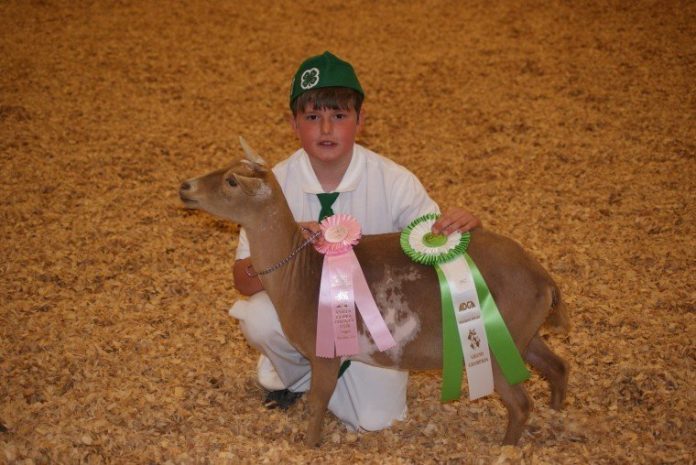
National 4-H week was earlier this month, and 4-Hers from kindergarten up to high school seniors will be observing the occasion. National 4-H week is an opportunity for 4-Hers to don the traditional white and green uniform to represent their organization, and to spread the word about 4-H.
But what exactly is 4-H?
The most obvious answer is that 4-H is an ag program. 4-H’ers can be found raising caves, cows, and everything in between. Experienced adult leaders help members learn about proper care and husbandry, as well preparing them to attend local fairs and shows. San Martin 4-H, comprised of members from Morgan Hill, San Martin, and Gilroy, were showing off their showmanship skills as far off as the San Mateo and Santa Cruz fairs this year. Aside from the once a month general club meetings, animal projects meet once or twice a month to discuss animal husbandry, showmanship, breeding, and marketing the particular animal involved. Ownership of the animal is optional, especially for larger projects like Alpaca or Beef.
4-H also has plenty to offer for those who aren’t agriculturally inclined. Many traditional skills, like sewing, food preservation, and candy-making, are taught in the same project format as animal projects (1-2 meetings per month).
4-H has also expanded into the realms of science and technology, with several levels of Robotics/Electronics and a possible Model Rocketry project. The current water-level control system at San Francisco State University was designed in part by members of San Martin’s Advanced Robotics project just last year. Various other miscellaneous projects, like the very popular Outdoor Skills program and Farm Tech, add to the variety of subjects taught through 4-H.
On top of both ag and non-ag education, 4-H is a service organization. The San Martin 4-H Club puts on an annual petting zoo for the children at the Boccardo Family Living Center in San Martin. In the cold winter months, members bring in canned food and warm coats for those in need. Come February, 4-H’ers will be making valentines for local homes for the elderly. In May, another group will be picking up trash and weeding the garden at the Historic Machado Schoolhouse in Morgan Hill. Most of these service projects, like many other 4-H activities, are both run and organized by youth members.
Leadership opportunities abound in 4-H clubs. Most activities are either partially or completely organized by youth members, often with committees and planning meetings that emulate adult organization committees. An Executive Board is elected annually, and most positions are open to kids of all ages (the Treasurer and President must be at least 13 years of age). This Board helps plan and conduct each general club meeting, and meets on its own once a month to take care of budgets and other club business. Outside of the 10-13 officer positions, each project can have any number of Teen Leaders that help run project meetings and assist younger members. This kid-run system leads to leadership and logistic skills far beyond that of an average high-schooler (this article was proposed, outlined, drafted, edited, and submitted entirely by youth less than 17 years of age.)
Most importantly 4-H is a Youth Development Program (hence the full name, 4-H YDP).
While plenty of other adolescents are meandering across a Facebook home page, 4-H’ers are learning real skills and working with actual people. Consider it a challenge to find any other place where a group of 6th-11th graders can sit still for 45 minutes and obey Robert’s Rule’s of Order while discussing a $7,000-$8,000 budget planned and proposed by a high-school freshman. 4-H’ers speak confidently, plan effectively, and succeed often because they have had opportunities to learn and apply these skills. Each year ends with the submission of a year-long record of all the activities completed by the member. As well as teaching record-keeping skills, the record book gives each member an opportunity to look back and see how much they have grown through 4-H. Often, it seems like the first and last page of each book was written by two completely different people.
The San Martin 4-H club meets at the San Martin Lion’s Club on the first Thursday of each month. The Nov. 1 meeting will begin with a new member orientation at 6 p.m. and a potluck dinner at 6:30 p.m. The year is just getting under way, feel free to grab your green and white and join in! Contact in**@*********4h.org for more information, or visit www.sanmartin4h.org.













